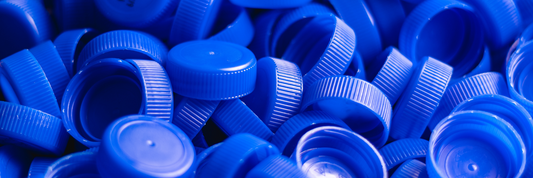A cake topper is the crown jewel of your creation. Its size and proportion significantly impact the overall aesthetic. This guide empowers bakers to master cake topper size, ensuring your masterpieces are visually stunning and structurally sound. From tiered cakes to custom designs, understanding these principles is essential for creating unforgettable customer experiences.
- What Is Cake Toppers? Everything You Need to Know about Cake Toppers
- From Design to Preservation: Mastering the Wedding Cake Toppers for Bakery Owners
- Choosing the Right Cake Box Sizes: Tips for Bakers and Event Planners
Standard Cake Topper Sizes
While these measurements serve as a starting point, it's essential to consider the overall aesthetic of your cake. For instance, a minimalist cake might call for a larger topper to create a focal point, while an intricately decorated cake may require a smaller topper to avoid overwhelming the design.
- Small cakes (6-8 inches): A topper ranging from 3 to 4 inches typically creates a balanced look. However, for a bolder statement, consider a slightly larger topper.
- Medium cakes (8-10 inches): A 4 to 5-inch topper is often a safe bet. Yet, depending on the cake's design and the topper's style, adjustments might be necessary.
- Large cakes (10-12 inches): A 5 to 6-inch topper generally provides a good proportion. Nevertheless, for exceptionally large or ornate cakes, a smaller topper could be more suitable.
- Tiered cakes: The top tier is the key determinant of topper size. Aim for a topper significantly smaller than the top tier to maintain balance and visual appeal. However, for dramatic effect, you might consider a larger topper, ensuring it's securely attached.

Cake Topper Size Based on Cake Size
The relationship between cake size and topper size is fundamental to cake design.
- Single-tier cakes: A general rule of thumb is to select a topper slightly smaller than the cake's diameter. Subtracting 1 to 2 inches from the cake diameter often yields a pleasing proportion. However, this can vary depending on the cake's height and the desired visual impact. For instance, a tall cake might benefit from a slightly larger topper to maintain balance.
- Tiered cakes: The top tier is the focal point for topper sizing. A topper significantly smaller than the top tier ensures stability and visual harmony. However, for a more dramatic effect, a larger topper can be used, provided it's securely attached. Consider the overall height of the cake when making this decision.
Additional factors to consider:
- Cake shape: Round cakes often accommodate a wider range of cake topper sizes compared to square or rectangular cakes.
- Topper weight: Heavier toppers might require size adjustments to prevent the cake from tilting.
- Cake decoration: Intricate cake decorations might necessitate a smaller topper to avoid overcrowding the design.
Weight of Cake Toppers
The weight of a cake topper is a critical factor in ensuring the structural integrity and visual appeal of your cake.
- Material: The material used for the topper significantly impacts its weight. Lighter materials like plastic, wood, or fondant are generally preferred for larger or tiered cakes. Heavier materials such as acrylic, metal, or ceramic require careful consideration and might necessitate additional support structures.
- Size: The cake topper size directly correlates with its weight. Larger toppers tend to be heavier. Therefore, it's essential to balance the desired size with the cake's ability to support the weight.
- Design: Intricate designs often require additional materials, leading to increased weight. Consider simplifying designs for larger or tiered cakes to avoid compromising structural integrity.
- Support structures: For heavier toppers, incorporating support structures like dowels or cake supports is crucial. These structures help distribute the weight evenly and prevent the cake from tilting or collapsing.
Custom Cake Topper Sizing
Custom cake toppers offer endless possibilities for personalization, but careful consideration of cake topper size is essential.
- Client consultation: Engage in detailed conversations with clients to understand their vision and cake specifications.
- Design and material: The design and material chosen will influence the appropriate size. Intricate designs might require adjustments to ensure visibility and balance.
- Cake dimensions: Accurately measure the cake to determine the optimal topper size. Consider the cake's height, number of tiers, and overall design.
- Weight considerations: Discuss weight limitations with the client to avoid structural issues. Offer alternative materials or designs if necessary.
- Prototyping: Create a prototype of the custom topper to assess its size and weight before finalizing the design.

How to Measure for a Cake Topper
Accurate measurements are crucial for creating a perfectly fitting cake topper.
- Tools: Gather the necessary tools, including a measuring tape, ruler, and pen.
- Cake dimensions: Measure the diameter and height of each tier for tiered cakes. For single-tier cakes, measure the diameter and height.
- Topper placement: Determine the desired placement of the topper on the cake. This will help in determining the appropriate size and shape.
- Consider cake design: Take into account any cake decorations or elements that might affect the topper's placement or size.
- Documentation: Record the measurements for future reference and communication with clients or suppliers.
Conclusion
A well-chosen cake topper can elevate a cake from good to extraordinary. By carefully considering cake topper size, weight, and design, bakers can create visually stunning and structurally sound masterpieces. Understanding the interplay between these elements is essential for achieving a perfect balance. Through meticulous planning and attention to detail, bakers can delight customers with cakes that are as impressive as they are delicious.









